About the meaning of the latin verb ‘matizare‘ in various medieval handbooks to the art of painting.

On day two of the course: Medieval Painting, which I have been teaching for many years, we zoom in on two important aspects of painting miniatures:
The colours of the face, the skin also known as inkarnate.
The painting of fabrics, clothes with folds.
I want to talk about the latter in this post and its relation to the special word: ‘matizare’. The word ‘matizare’ , is used in several medieval handbooks for painters. Among others, it appears in the 11th century work: De coloribus et mixtionibus. But we also come across it in the anonymous handbook for painters from the 14th century: De Arte Illumniandi, after which this website is named. Furthermore, it is used in a late 13th-century handbook from France and in a Portuguese work.
The word ‘matizare’ was used in several variations: matizare, amatizare, ematizare. In Spanish today, there is still a word ‘ matiz’ known as ‘hue’. In this post, I want to talk about the meaning of this word because the word is very relevant to the technique of painting in the Middle Ages, especially of pleating fabrics.

The evangelist Matthew. Source: Digitale Sammlungen-DE. Evangeliar von Reichenau. 11th century.
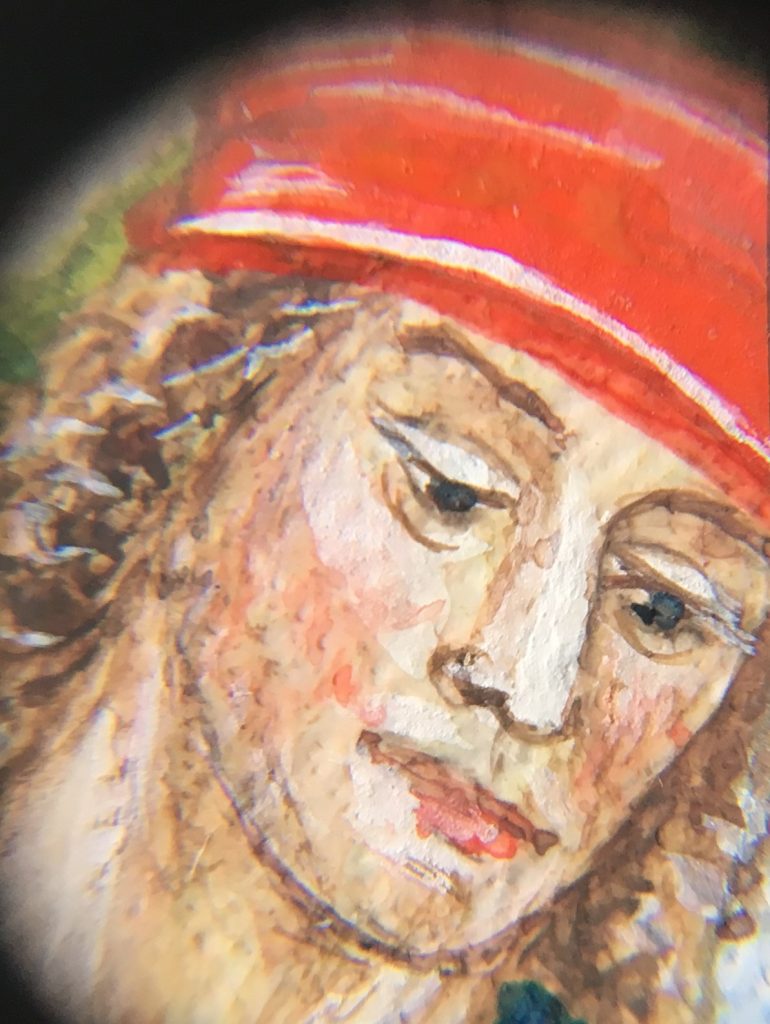
Another word, closely related tot the word matizare is the word: ‘incidere‘. This word means to darken the color especially in the (darker) folds of the fabric.
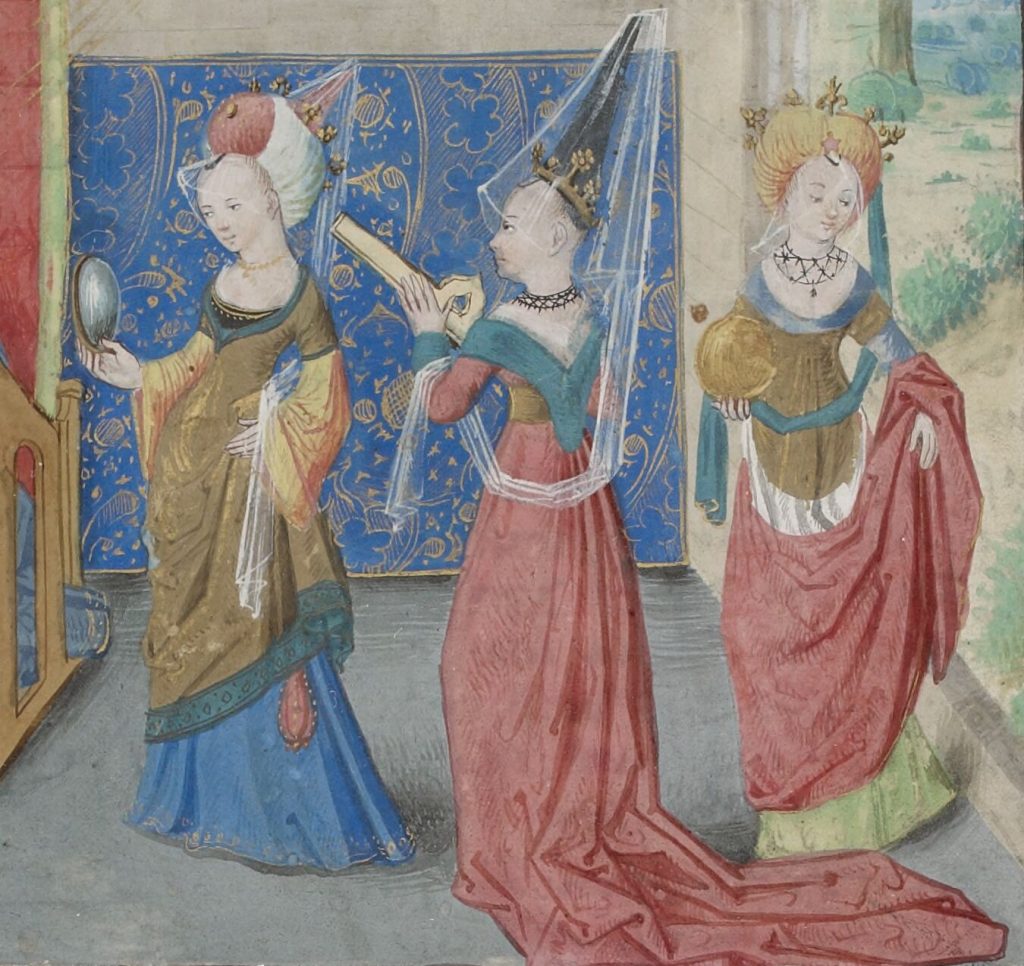
Painting clothes is about using painting techniques to evoke a certain spatiality that does justice to the folds. What is striking about the miniatures is that at the beginning of the Middle Ages, the suggestion of folds was very sparse. A few lines then suggest the fabric and folds. ( See above the image of the evangelist Matthew). The further we get in time, the more attention is paid to suggesting the plasticity, spatiality of clothing.
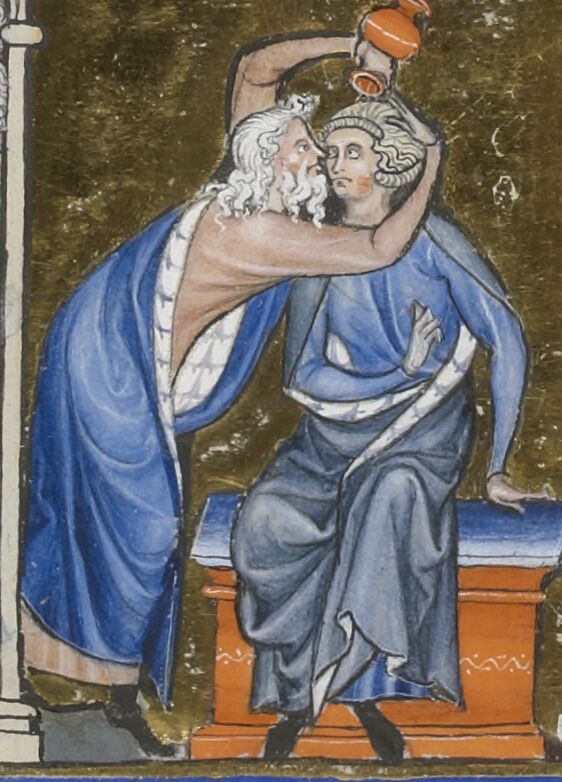
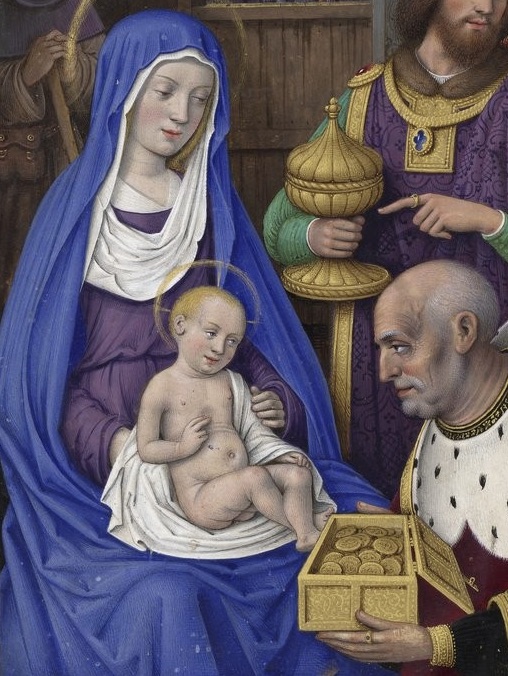
Jean Bourdichon, 1457 -1521.
Adoration of the Magi from the East (1503-1508). Here the suggestion of the fabric is raised to a great height. The light and dark of the folds in the fabric now flow smoothly. Source: Gallica
Painting manuals from the Middle Ages focused on painting clothes, and fabrics, among other things. Making a smooth transition between light and dark was difficult with the paints used. This was in contrast to oil paint, with which you can easily make smooth transitions. People therefore had to rely on painting techniques that suggested flowing transitions. And key words here were : matizare and incidere.
In modern terms, we speak of ‘raising’ and ‘darkening’. ‘Matizere’ is to lighten the colour lot so that that spot stands out spatially. ‘Incidere’ is making a colour patch darker so that it recedes spatially to the rear.
Below we see an example where I used this technique with real Ultramarine ( Lapis lazuli).
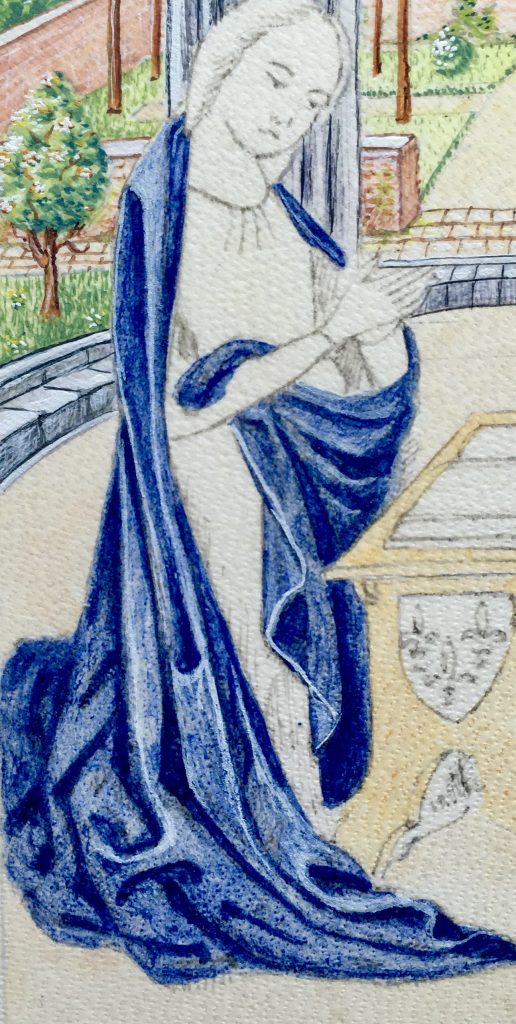


With this miniature from: des Grandes Heures d’Anne de Bretagne / Saint Jean l’évangélist, we see that the painting technique has been taken to an extreme. The shading with painting gold gives the folding and the image a lustre that is almost unearthly.
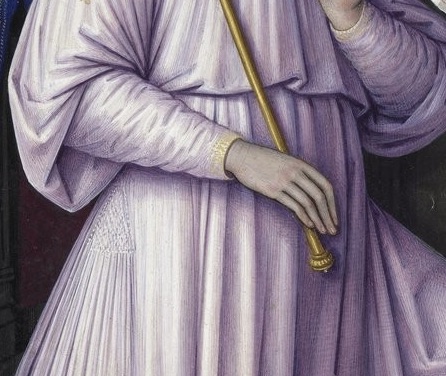
Painting folds as we see in medieval manuscripts is an art in itself. It can be done with a simple approach or with a more elaborate painting technique. We see many fine examples of this. In the Middle Ages itself, it turned out to be an item that people drew attention to, given that it was given attention in painting manuals.
Anyone who henceforth comes across the words: matizare and incidere, knows that it is about painting folds.
